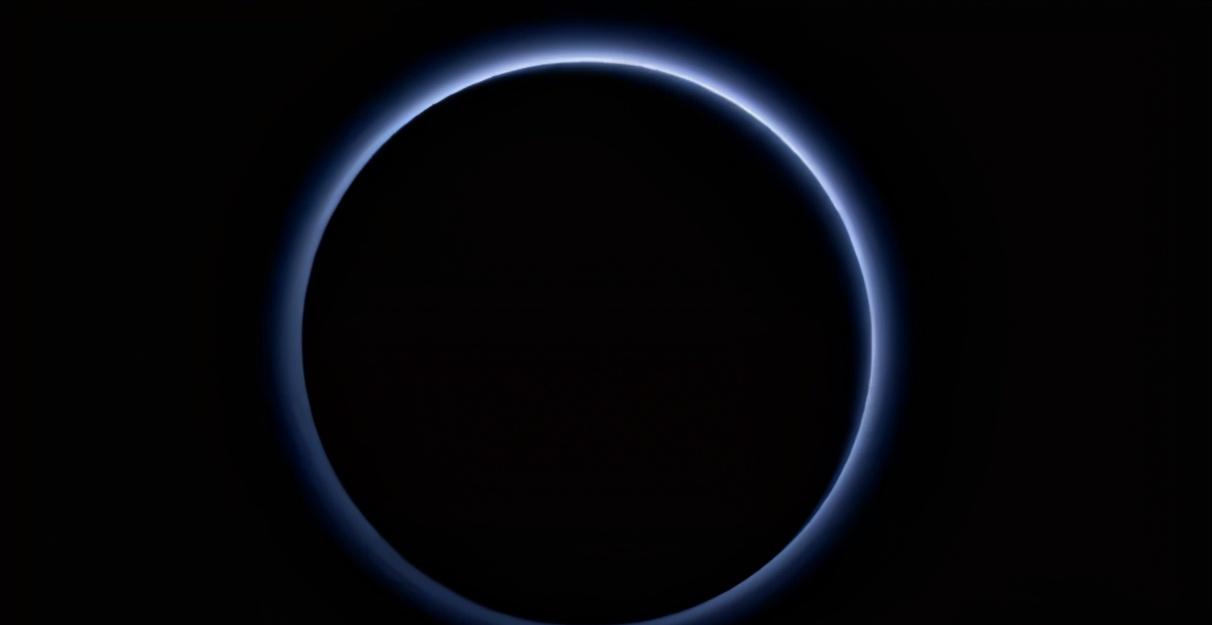Editor's note: Pluto's atmosphere appears blue because of the presence of icy organic compounds, the main component of particulate matter is cyanide ice crystals, and light on Pluto also triggers the chemical reaction of the upper atmosphere, forming cyanide, if there is a sample return mission in the future, these cyanides may contaminate the return capsule, and its lethal concentration only needs 1 mg.
Cosmic Impression | Headline Exclusive Deep Science Popularization Column No. 1549
As the New Horizons probe flew by Pluto, it found that its atmosphere appeared blue, and NASA's research showed that Pluto's atmosphere appeared blue because of the presence of icy organic compounds. These organic matter appear as particulate matter at ultra-low temperatures, suspended in Pluto's atmosphere. The main component of the particulate matter is cyanide ice crystals, the parent of the cyanide is a gas, due to the cyan or blue-purple color, so the cyanide adds a gas word to the cyan cyan, which is the cyan word.

Picture interpretation: The blue substance that appears outside Pluto's atmosphere is cyanide
Image interpretation: Images of Pluto taken by the New Horizons probe
The cyanide haze on Pluto is filled with a large number of particles, including smoke, ice particles, etc. On Pluto, the surface atmospheric temperature is only minus 236 degrees Celsius, and at very low temperatures, most of the material becomes solid. It is said that the formation of haze is not unique to Pluto, there is haze on Mars and Venus, and even gaseous planets such as Jupiter and Saturn have haze.
Haze also exists on Saturn's largest moon, Titan, the only one with clouds, so Titan is very different. The haze on Titan appears in the form of a thick orange mist, similar to smoke on Earth. In addition to Titan, Neptune's largest moon, Triton, also has haze, and according to Voyager 2 data, there is a large distribution of haze in Triton's atmosphere. From the above analysis, it can be seen that the haze on Pluto is not an isolated case, but a universal phenomenon, which has appeared on many planets and moons in the solar system, and if there is an atmosphere, then the probability of haze appearing is greater.
Picture interpretation: Titan's atmosphere also has haze
Picture interpretation: Triton is also an icy celestial body
The problem is that the haze on Pluto is so special that NASA conducted an in-depth investigation of Pluto in 2015, when the New Horizons probe skimmed near Pluto and finally reached the vicinity of Pluto after 9 years of space flight. Although it is only skimming, rather than circling, we have basically mastered the haze composition of Pluto's atmosphere. Pluto also has a haze that envelops the entire surface of the celestial body, and it is a frozen granular haze.
Pluto has some similarities with Titan and Triton, and the composition of the atmosphere has a large amount of nitrogen, as well as a certain content of methane and carbon monoxide, which means that these celestial bodies have a certain concentration of haze, and the composition is relatively close. The haze on Titan is stimulated by the sun's ultraviolet rays, which form a chemical reaction with molecules in the upper atmosphere, forming organic compounds. These organic compounds have continued to evolve over a period of more than a billion years, forming organic molecules of greater mass.
Image interpretation: The geyser eruption of Triton
Although Titan, Triton, and Pluto all have haze and are relatively similar in composition, the origins are very different. Voyager 2 has found that there are visible dark stripes in triton's Antarctic region, which are formed by geyser eruptions. This suggests that triton's internal kinetic mechanisms and eruptive substances are involved in the formation of haze, resulting in different characteristics of haze.
Scientists have found that if we use the same haze dynamic mechanism to simulate operations on Pluto and Titan, respectively, Titan can only produce haze particles that are only half of Pluto. Headlines' exclusive cosmic impression points out that Titan's problem is that the temperature is not as low as Pluto, and Pluto is 80 degrees Celsius lower than Titan. Light on Pluto also triggers chemical reactions in the upper atmosphere, forming cyanides that could contaminate the return capsule with lethal concentrations of only 1 milligram if there are sample return missions in the future. The cosmic impression is exclusive to today's headlines, the others are counterfeit, and the reprints are illegal.